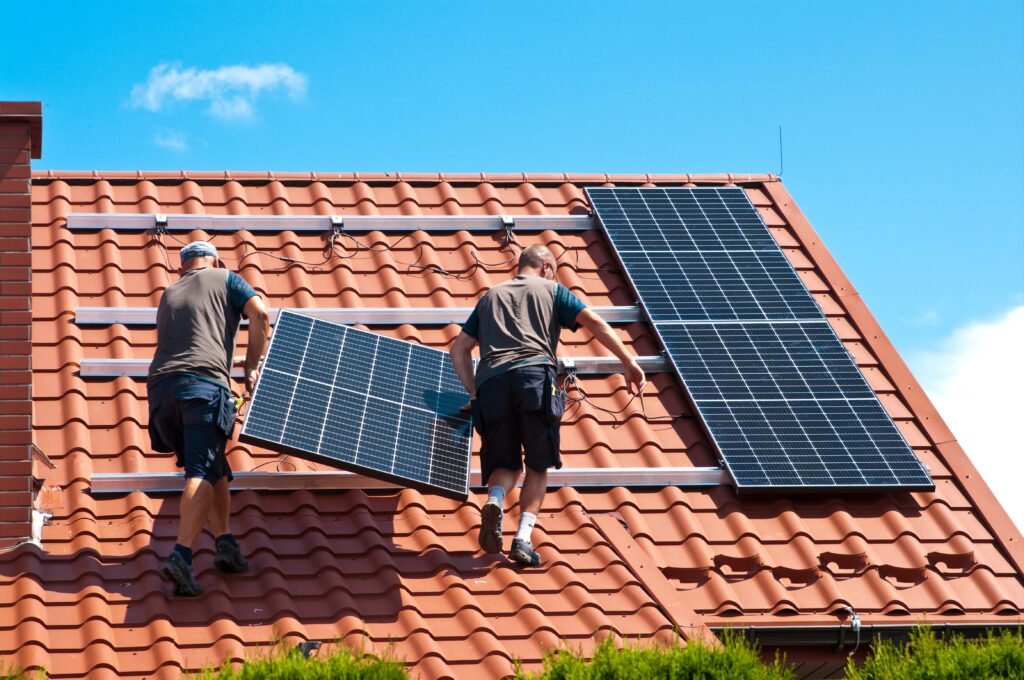Solar power 101: A Comprehensive guide to solar heating
Solar heating is growing in popularity as more Americans become concerned about the impact of climate change on their lives. Rising utility bills have also made more Americans think about how to switch to more affordable energy solutions.
Electric heating with solar panels is the most common type of solar energy solution, with 1.47 million solar panels in use nationwide. However, combining solar residential heating with solar panels can be a smart way to go green and save money in the process.
In this guide, we’ll cover solar heating, its benefits, and what you need to know about utilizing solar power home heating to reduce excessive energy bills.
What is Solar Heating?
Solar heating at home is an underutilized energy solution originating from the “sunrooms” of the ancient Greeks. The concept is simple enough to understand. These heating systems capture and store solar energy to keep indoor spaces warm.
Modern heating systems are divided into two groups: passive and active. These systems harvest heat from the sun and utilize that heat to generate warm water or for space heating. Unlike solar panel heating, these systems do not use the sun’s thermal energy to generate electricity.
Active Solar Heating vs. Passive Solar Heating
Active solar heating systems use mechanical devices, such as storage tanks, pumps, and collectors, to circulate heat throughout your home.
The collector is responsible for collecting solar energy before air or liquid in a pipe is warmed by the heat transferred from your collector. The heat will be carried to a room via a pump or vent or stored within your storage system.
For most people, active solar heating systems are the most viable solutions because these are the only ones that can be installed within an existing home.
In contrast, passive heating systems use no active mechanisms to gather or distribute solar heat throughout your living space. Implementing passive solar heat solutions requires you to build or remodel your home in a specific way.
Some examples of passive solar heat at home include:
- Using concrete floors/thermal-mass masonry to capture and store heat
- Building rooms with sun-facing windows
- Sealing in heat through thick, airtight insulation
- Installing insulated blinds and drapes
As you can see, passive home solar heat relies on intelligent, contemporary design. While you could remodel or renovate your home to incorporate some of the elements above, the cost would far outweigh the investment in an active solar energy heating system.

Benefits of home solar heat?
Solar heat technology can revolutionize how the average person heats their home in colder parts of the country.
Today, nearly a third of all households struggle to pay their energy bills. Bringing down these bills is essential for the livelihoods of millions.
Some simple home solar heat alterations through an initial investment can make a massive difference to your monthly spending and benefit the environment. Here are some advantages of solar heat systems if you are considering an alternative to traditional solar electric heat panels.
Endless Amounts of Energy
There is no end to the amount of energy produced by the sun. Your home can harness this energy source free of charge.
Contrary to popular belief, your home does not need a sunny day to gather solar energy. Even on a cloudy, overcast day, your collectors absorb thermal energy from the sun.
No CO2 Emissions
If you care about the planet’s future, solar heat solutions produce no CO2 emissions. Whether you opt for an active or passive system, the mechanisms involve focusing on the natural processes of the sun to heat your home.
Cut down your carbon footprint to almost nothing with these CO2-free solutions.
Save Money
As previously noted, harnessing solar energy enables you to make massive savings on your energy bills. On average, you can expect to expend 60% less energy on heating water and up to 35% less energy on space heating.
Reducing your consumption of fossil fuels will lower household energy costs. With soaring inflation and utility companies refusing to freeze their prices, active and passive solar heat systems are a financial game-changer for millions of hardworking Americans.
Depending on where you live, you may be able to take advantage of tax credits and grants on solar energy systems. Talk to EMT Solar to learn more about available financial incentives for installing brand-new solar energy solutions at home.
Better Efficiency and Integration
Modern systems have been designed to work at peak efficiency, even during the winter. The technology behind harnessing solar energy has improved markedly over the last decade, allowing them to heat your home, whatever the weather, without losing efficiency.
Moreover, you can integrate solar thermal systems into your existing energy infrastructure. Environmentally conscious Americans know the importance of having more than one energy source to cover themselves should the worst happen. Today, approximately 37% of U.S. homes have at least two energy sources.
Relying on a single energy source, such as your furnace, makes you vulnerable to natural disasters, maintenance issues, and unexpected breakdowns.

How Does Solar Power Home Heating Work?
This section will discuss active heating systems since passive systems are relatively rare, except in newer homes.
Hydronic solar panels, or hydronic systems, offer two primary functions: space heating and water heating.
Solar Space Heating
The purpose of solar space heating is to provide direct heating to your living space.
Air heaters on the roof or walls extract cold air into a solar collector. The air inside the solar collector is heated and blown back into the room.
Roof-mounted heaters use ductwork to push heated air into a room, whereas wall-mounted heaters are mounted on south-facing walls and push air through holes into a room.
Solar Water Heating
Water heating systems use solar collectors to absorb solar radiation and convert it into heat to ensure an ample hot water supply.
Depending on your collector model, water or non-toxic glycol antifreeze will be used. Your collector captures solar energy and transfers it into the fluid.
Once the fluid passes through the collector, the liquid’s temperature will increase to 10 and 20 degrees Fahrenheit. The warmed fluid moves to a heat exchanger or a water storage tank for on-demand use.
There are three types of water heating systems available for homeowners. Here’s an overview of how each of them works.
1. Radiant Floor Systems
Within radiant floor systems, heated liquid travels through a series of embedded pipes within a concrete floor. Concrete is the most common flooring option because it’s an excellent material for transferring heat. The heated liquid radiates through the concrete and into the rooms of your home.
Be aware that you can compromise the system’s efficiency by choosing the wrong floor or covering it with carpeting. Ideally, a home using a radiant floor system will have floors finished with tiles.
Intelligently designed radiant flooring systems can remove the need for a separate heat storage tank, thus reducing the complexity of your system. Most experts recommend maintaining a standard residential water heater as a back up.
2. Hot-Water Baseboards
Hot-water baseboards are installed within a baseboard or at a point close to the ground. Positioning your baseboard correctly is essential because the system relies on the scientific principle that heat will rise naturally.
Again, your contractor will install a piping system in the baseboard to pump hot water and transfer heat into each room.
These baseboards need the water temperature to remain at 160 to 180 degrees Fahrenheit to function effectively. Backup systems are often used to increase the temperature of the water.
3. Central Forced-Air Systems
Solar heating is a liquid heating system at heart, but it can be converted into a forced-air solution by installing a liquid coil within a room’s air-return duct.
They work by heating up when air is pulled into the air-return duct from a room. The heat also increases the temperature of the solar-heated liquid in your heat exchanger. Forced-air systems usually have a backup from a conventional domestic furnace to guarantee a constant hot water supply.
Note that the heating coil must be large enough to transfer enough heat into the room at the lowest possible collector operating temperature. Otherwise, their reliability becomes compromised.

FAQs
Increasing awareness of solar heating solutions has led to more inquiries regarding installation options. Here are some of the most common questions people have about these systems.
Is solar home heating less expensive than conventional heating options?
Yes, because these systems do not use fossil fuels to generate heat. Passive heating systems are one of the best options, as there is no need to install new mechanisms, and your home is designed with eco-friendly heating in mind. However, not everyone is in a position to build a new, custom home for their families.
Instead, an active heating system will suit most people as they can be installed in existing homes. Active systems require a significant outlay to get started, but they will provide a positive return on your investment over time by reducing your energy bills.
Most homeowners using solar energy to heat their homes will continue to maintain a conventional home heating system as an emergency backup.
How much does it cost to install solar panels for home heating?
Solar panels remain one of the best renewable home heating systems. Combining these cutting-edge home solar heat systems with solar panels as your backup can enable you to become a completely carbon-neutral home.
The initial cost of solar panels ranges from $3,500 to $35,000, depending on the panel model and your roof size. Knowing the startup costs of your solar panels can help you decide if they fit in with your budget.
Many states and municipalities also offer tax incentives for homeowners to install solar panels. Check with an expert like EMT Solar on which credits and grants you could be eligible for and how to apply for them.
How long does it take to install solar panels?
The actual installation time of a conventional residential solar system is as little as six to eight hours. However, the total installation time can be anywhere from two to six months because the longest part of the installation process is waiting for your planning permit approval.
Some municipalities are friendlier to solar panel installations than others. It largely depends on where you live and whether your locality has an efficient system for processing permit applications.
Your installer should be able to manage this process and give you a rough processing timeline based on their previous experiences.
Tap Into the Power of Solar Heating with EMT Solar
As the world heats up and solar bill soar, there is an enormous opportunity for homeowners to fight climate change while combatting rising electricity costs. Solar residential heating systems enable you to reduce your carbon footprint, lower your monthly bills, and see significant financial returns.
Understanding which solar system is best for your home is challenging, but you can get peace of mind by letting your contractor handle everything from start to finish.
At EMT Solar, we understand the ins and outs of different solar systems, costs, and the dreaded permitting process. Contact us to learn more about the benefits of solar panels and creating a more sustainable home. Get your free quote now!
